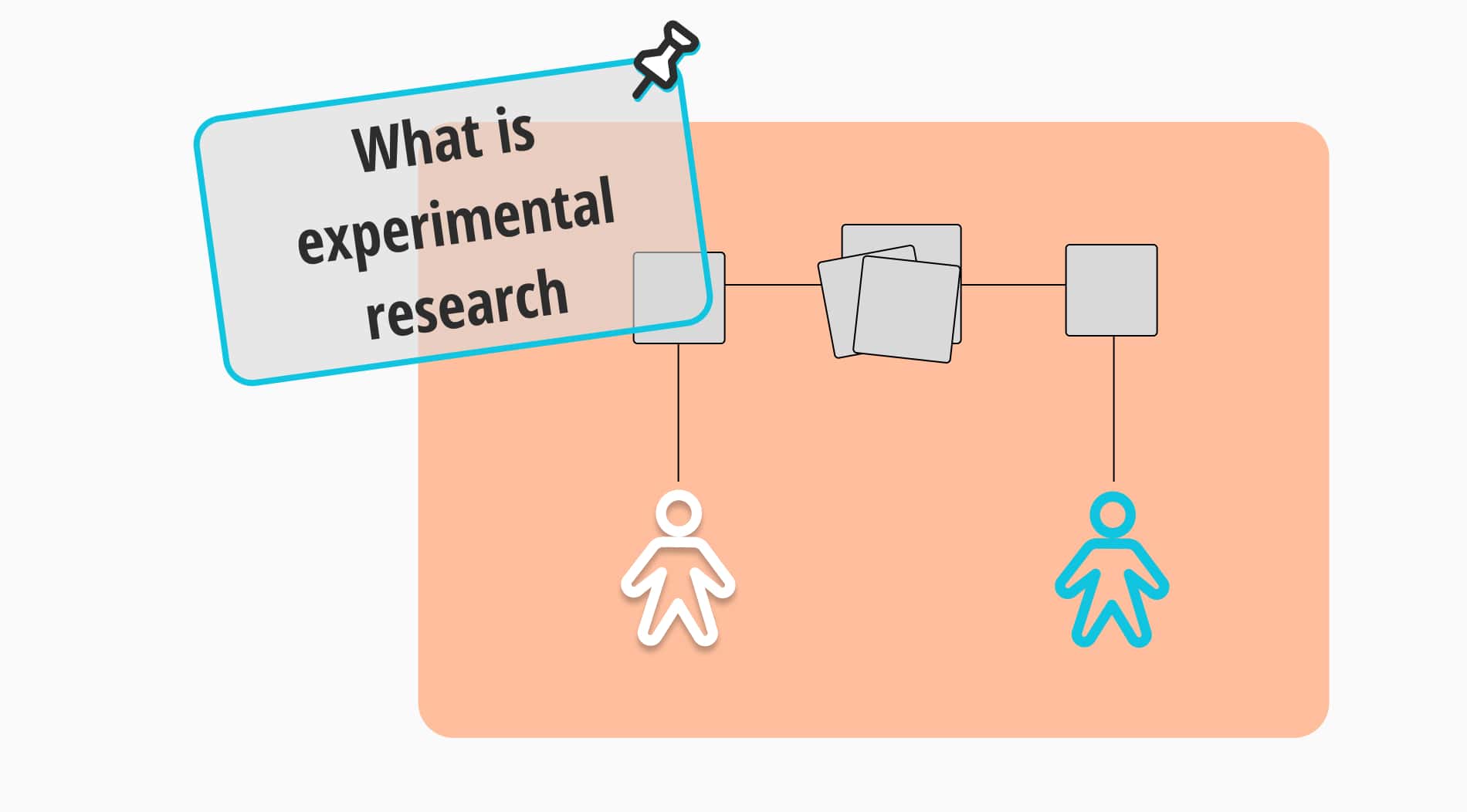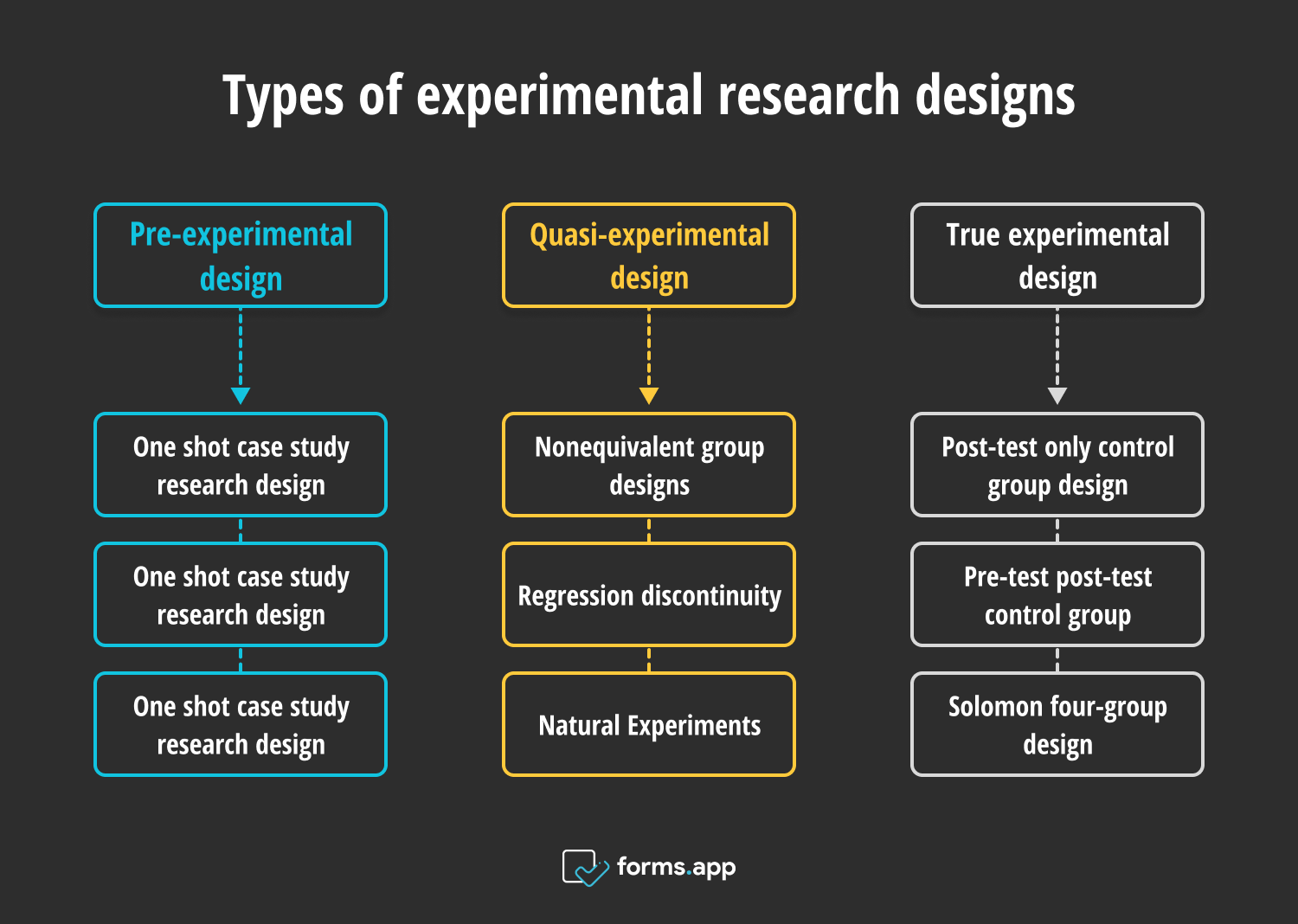
Life and its secrets can only be proven right or wrong with experimentation. You can speculate and theorize all you wish, but as William Blake once said, “The true method of knowledge is experiment.”
It may be a long process and time-consuming, but it is rewarding like no other. And there are multiple ways and methods of experimentation that can help shed light on matters. In this article, we explained the definition, types of experimental research, and some experimental research examples. Let us get started with the definition!
What is experimental research?
Experimental research is the process of carrying out a study conducted with a scientific approach using two or more variables. In other words, it is when you gather two or more variables and compare and test them in controlled environments.
With experimental research, researchers can also collect detailed information about the participants by doing pre-tests and post-tests to learn even more information about the process. With the result of this type of study, the researcher can make conscious decisions.
The more control the researcher has over the internal and extraneous variables, the better it is for the results. There may be different circumstances when a balanced experiment is not possible to conduct. That is why are are different research designs to accommodate the needs of researchers.
3 Types of experimental research designs
There is more than one dividing point in experimental research designs that differentiates them from one another. These differences are about whether or not there are pre-tests or post-tests done and how the participants are divided into groups. These differences decide which experimental research design is used.

Types of experimental research designs
1 - Pre-experimental design
This is the most basic method of experimental study. The researcher doing pre-experimental research evaluates a group of dependent variables after changing the independent variables. The results of this scientific method are not satisfactory, and future studies are planned accordingly. The pre-experimental research can be divided into three types:
A. One shot case study research design
Only one variable is considered in this one-shot case study design. This research method is conducted in the post-test part of a study, and the aim is to observe the changes in the effect of the independent variable.
B. One group pre-test post-test research design
In this type of research, a single group is given a pre-test before a study is conducted and a post-test after the study is conducted. The aim of this one-group pre-test post-test research design is to combine and compare the data collected during these tests.
C. Static-group comparison
In a static group comparison, 2 or more groups are included in a study where only a group of participants is subjected to a new treatment and the other group of participants is held static. After the study is done, both groups do a post-test evaluation, and the changes are seen as results.
2 - Quasi-experimental design
This research type is quite similar to the experimental design; however, it changes in a few aspects. Quasi-experimental research is done when experimentation is needed for accurate data, but it is not possible to do one because of some limitations. Because you can not deliberately deprive someone of medical treatment or give someone harm, some experiments are ethically impossible. In this experimentation method, the researcher can only manipulate some variables. There are three types of quasi-experimental design:
A. Nonequivalent group designs
A nonequivalent group design is used when participants can not be divided equally and randomly for ethical reasons. Because of this, different variables will be more than one, unlike true experimental research.
B. Regression discontinuity
In this type of research design, the researcher does not divide a group into two to make a study, instead, they make use of a natural threshold or pre-existing dividing point. Only participants below or above the threshold get the treatment, and as the divide is minimal, the difference would be minimal as well.
C. Natural Experiments
In natural experiments, random or irregular assignment of patients makes up control and study groups. And they exist in natural scenarios. Because of this reason, they do not qualify as true experiments as they are based on observation.
3 - True experimental design
In true experimental research, the variables, groups, and settings should be identical to the textbook definition. Grouping of the participant are divided randomly, and controlled variables are chosen carefully. Every aspect of a true experiment should be carefully designed and acted out. And only the results of a true experiment can really be fully accurate. A true experimental design can be divided into 3 parts:
A. Post-test only control group design
In this experimental design, the participants are divided into two groups randomly. They are called experimental and control groups. Only the experimental group gets the treatment, while the other one does not. After the experiment and observation, both groups are given a post-test, and a conclusion is drawn from the results.
B. Pre-test post-test control group
In this method, the participants are divided into two groups once again. Also, only the experimental group gets the treatment. And this time, they are given both pre-tests and post-tests with multiple research methods. Thanks to these multiple tests, the researchers can make sure the changes in the experimental group are directly related to the treatment.
C. Solomon four-group design
This is the most comprehensive method of experimentation. The participants are randomly divided into 4 groups. These four groups include all possible permutations by including both control and non-control groups and post-test or pre-test and post-test control groups. This method enhances the quality of the data.
Advantages and disadvantages of experimental research
Just as with any other study, experimental research also has its positive and negative sides. It is up to the researchers to be mindful of these facts before starting their studies. Let us see some advantages and disadvantages of experimental research:
Advantages of experimental research:
- All the variables are in the researchers’ control, and that means the researcher can influence the experiment according to the research question’s requirements.
- As you can easily control the variables in the experiment, you can specify the results as much as possible.
- The results of the study identify a cause-and-effect relation.
- The results can be as specific as the researcher wants.
- The result of an experimental design opens the doors for future related studies.
Disadvantages of experimental research:
- Completing an experiment may take years and even decades, so the results will not be as immediate as some of the other research types.
- As it involves many steps, participants, and researchers, it may be too expensive for some groups.
- The possibility of researchers making mistakes and having a bias is high. It is important to stay impartial
- Human behavior and responses can be difficult to measure unless it is specifically experimental research in psychology.
Examples of experimental research
When one does experimental research, that experiment can be about anything. As the variables and environments can be controlled by the researcher, it is possible to have experiments about pretty much any subject. It is especially crucial that it gives critical insight into the cause-and-effect relationships of various elements. Now let us see some important examples of experimental research:
An example of experimental research in science:
When scientists make new medicines or come up with a new type of treatment, they have to test those thoroughly to make sure the results will be unanimous and effective for every individual. In order to make sure of this, they can test the medicine on different people or creatures in different dosages and in different frequencies. They can double-check all the results and have crystal clear results.
An example of experimental research in marketing:
The ideal goal of a marketing product, advertisement, or campaign is to attract attention and create positive emotions in the target audience. Marketers can focus on different elements in different campaigns, change the packaging/outline, and have a different approach. Only then can they be sure about the effectiveness of their approaches. Some methods they can work with are A/B testing, online surveys, or focus groups.
Frequently asked questions about experimental research
Experimental research can be both qualitative and quantitative according to the nature of the study. Experimental research is quantitative when it provides numerical and provable data. The experiment is qualitative when it provides researchers with participants' experiences, attitudes, or the context in which the experiment is conducted.
In true experimental research, the participants are divided into groups randomly and evenly so as to have an equal distinction. However, in quasi-experimental research, the participants can not be divided equally for ethical or practical reasons. They are chosen non-randomly or by using a pre-existing threshold.
Wrapping it up
The experimentation process can be long and time-consuming but highly rewarding as it provides valuable as well as both qualitative and quantitative data. It is a valuable part of research methods and gives insight into the subjects to let people make conscious decisions.
In this article, we have gathered experimental research definition, experimental research types, examples, and pros & cons to work as a guide for your next study. You can also make a successful experiment using pre-test and post-test methods and analyze the findings. For further information on different research types and for all your research information, do not forget to visit our other articles!
Defne is a content writer at forms.app. She is also a translator specializing in literary translation. Defne loves reading, writing, and translating professionally and as a hobby. Her expertise lies in survey research, research methodologies, content writing, and translation.



 6 min read
6 min read

.png)